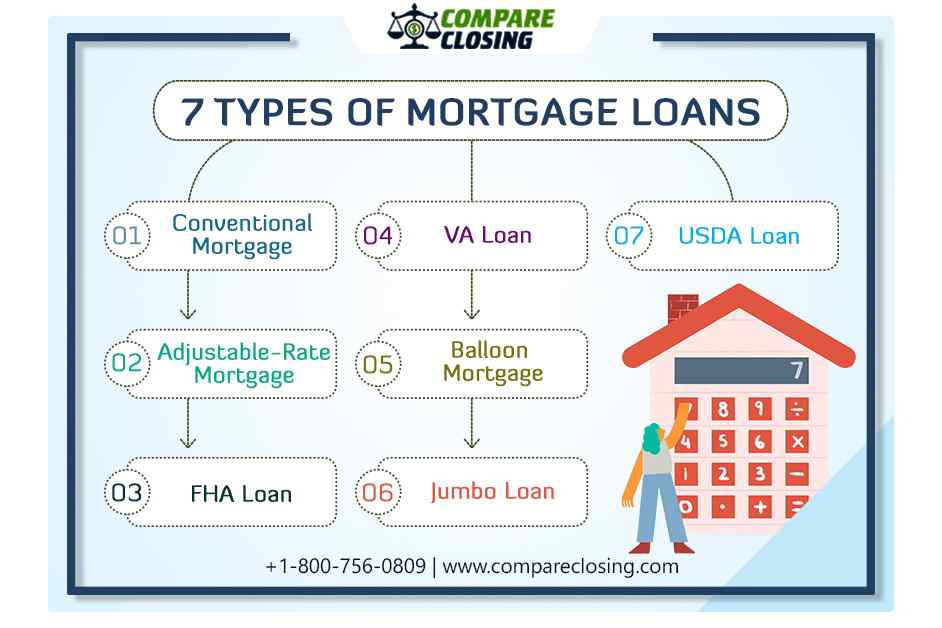A Complete Summary of Conventional Mortgage Loans for First-Time Buyers
Wiki Article
The Essential Factors to Take Into Consideration When Picking Between Fixed-Rate and Variable-rate Mortgage Fundings
When assessing home loan alternatives, consumers encounter a critical choice in between adjustable-rate and fixed-rate financings, each presenting potential mistakes and distinctive benefits. Key considerations such as interest rate security, predictability in monthly payments, and the effects of potential rate modifications can substantially impact long-lasting economic wellness. Moreover, recognizing the expected period of homeownership and the total cost of borrowing can shape one's strategy. As these aspects intertwine with individual financial scenarios and risk resistance, the ramifications of this selection might not be as uncomplicated as they seem. What nuances should be focused on in this essential decision-making procedure?Rate Of Interest Stability
When selecting a mortgage, recognizing passion rate security is crucial for educated decision-making. Rate of interest can considerably impact the total cost of a mortgage, and recognizing the nature of these rates is essential for borrowers. Fixed-rate home mortgages supply the benefit of constant regular monthly repayments over the life of the financing, securing consumers from market variations. This stability allows home owners to intend their funds with greater certainty, as they will not be impacted by increasing rates of interest.On the various other hand, adjustable-rate mortgages (ARMs) begin with lower first prices that might transform periodically based on market conditions. While this can lead to reduced payments originally, it also introduces unpredictability, as customers might face raised repayments if rates of interest climb. For those thinking about an ARM, it is important to assess the chance of price changes, the capacity for payment boosts, and the size of the initial fixed-rate period.
Eventually, the choice in between adjustable-rate and fixed-rate mortgages pivots on individual threat resistance and monetary conditions. Comprehending rate of interest security assists customers make notified decisions that line up with their long-lasting financial goals.
Regular Monthly Repayment Predictability
While debtors typically prioritize rate of interest stability, the predictability of monthly settlements is equally crucial in the home mortgage option process (Conventional mortgage loans). Month-to-month repayment predictability plays an essential function in budgeting and financial preparation, as it straight affects a homeowner's capital and overall economic health and wellnessFixed-rate mortgages offer a regular regular monthly payment throughout the life of the loan, permitting debtors to anticipate and intend their expenses properly. This security can be especially beneficial for novice buyers or those on a set revenue, as it removes the unpredictability connected with fluctuating repayments.
Conversely, variable-rate mortgages (ARMs) normally feature reduced preliminary payments that can change with time, causing prospective irregularity in regular monthly obligations. While initially enticing, this unpredictability can make complex monetary preparation, specifically if debtors do not represent future price modifications.
Potential Price Adjustments
In the world of variable-rate mortgages (ARMs), prospective price adjustments represent a considerable factor that debtors must thoroughly think about. Unlike fixed-rate mortgages, where the helpful hints rates of interest stays unmodified for the life of the funding, ARMs are characterized by rising and fall rate of interest rates that are connected to market indices. This irregularity can cause considerable modifications in regular monthly settlements, influencing the debtor's monetary preparation and budgeting.Commonly, ARMs have a first fixed-rate duration throughout which the rates of interest is stable. After this duration, nonetheless, the price changes at established intervals-- typically yearly. Customers should recognize the margin and index utilized to calculate these adjustments, as they directly influence future passion prices. Furthermore, ARMs usually include caps that limit exactly how much the rate of interest rate can boost at each adjustment and over the life of the loan, which can provide some level of security against extreme price walkings.
Comprehending these prospective changes is vital for borrowers, as they directly impact long-term settlement responsibilities. Evaluating individual financial circumstances and risk tolerance is crucial when deciding whether an ARM lines up with one's economic goals.
Financing Term Considerations
Lending term factors to consider play a pivotal function in the decision-making procedure for customers selecting in between adjustable-rate and fixed-rate mortgages. The length of the loan term considerably impacts regular monthly settlements, interest prices, and total economic preparation.
Eventually, debtors need to analyze their personal circumstances, economic goals, and market problems when considering the implications of funding term options within each mortgage type.

General Cost of Loaning
Fixed-rate home mortgages offer foreseeable month-to-month payments, as the interest rate continues to be consistent throughout the funding term. This predictability can lead to reduced general expenses, specifically in a steady or decreasing interest rate setting.Conversely, adjustable-rate home loans (ARMs) typically start with reduced first rates, leading to lowered in advance why not check here costs. Nevertheless, these prices can increase after a preliminary period, bring about possibly greater lasting prices. Consumers need to think about the regularity and extent of rate adjustments, in addition to the total lending period, to properly examine the monetary ramifications.
Furthermore, the overall price of loaning includes not only rate of interest rates but also costs and Go Here various other associated costs, such as shutting expenses and insurance coverage (Conventional mortgage loans). For that reason, when assessing mortgage alternatives, debtors must carry out a complete expense analysis over the life of the loan. By doing so, they can make an enlightened decision that straightens with their economic goals and risk resistance
Verdict
Passion price stability and monthly payment predictability are extremely important for reliable budgeting, while the capacity for price adjustments in ARMs presents monetary unpredictability. Furthermore, the expected duration of homeownership and the total price of loaning, consisting of interest rates and connected charges, have to line up with specific financial circumstances and risk resistance.Secret factors to consider such as rate of interest price stability, predictability in monthly payments, and the implications of potential rate changes can considerably influence long-lasting financial health. Rate of interest rates can dramatically impact the overall cost of a home loan, and recognizing the nature of these rates is essential for customers. Unlike fixed-rate home loans, where the interest price stays unchanged for the life of the finance, ARMs are identified by changing rate of interest prices that are linked to market indices. Furthermore, ARMs typically consist of caps that limit how much the rate of interest rate can increase at each modification and over the life of the financing, which can give some level of protection versus drastic rate walkings.
Interest rate security and regular monthly settlement predictability are paramount for efficient budgeting, while the potential for rate modifications in ARMs introduces economic unpredictability.
Report this wiki page